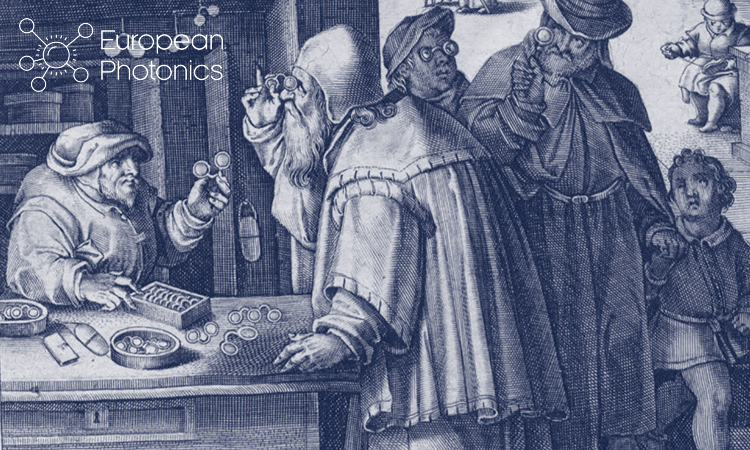Feature
From Venice to the Dutch Republic
The early-17th-century Netherlands, benefiting from dynamic and robust socioeconomic development, was at the forefront of early optics progress—an effort that involved both luminaries and less-known contributors.
 Detail of Jan van der Straet’s “Spectacles” (1584). [Rijksmuseum, the Netherlands / Purchased with the support of the F.G. Waller-Fonds]
Detail of Jan van der Straet’s “Spectacles” (1584). [Rijksmuseum, the Netherlands / Purchased with the support of the F.G. Waller-Fonds]
Over the past 500 years, a number of early pioneers of optical science have risen to prominence in general historical accounts—Isaac Newton and Galileo Galilei, for example, who blazed trails in mathematical physics and astronomy, and Robert Hooke and Antonie van Leeuwenhoek, who brought the microscope and the insights into nature that it has enabled. Yet this focus on household names overlooks a plethora of people, places and events that have influenced the field’s progress.
…Log in or become a member to view the full text of this article.
This article may be available for purchase via the search at Optica Publishing Group.
Optica Members get the full text of Optics & Photonics News, plus a variety of other member benefits.
